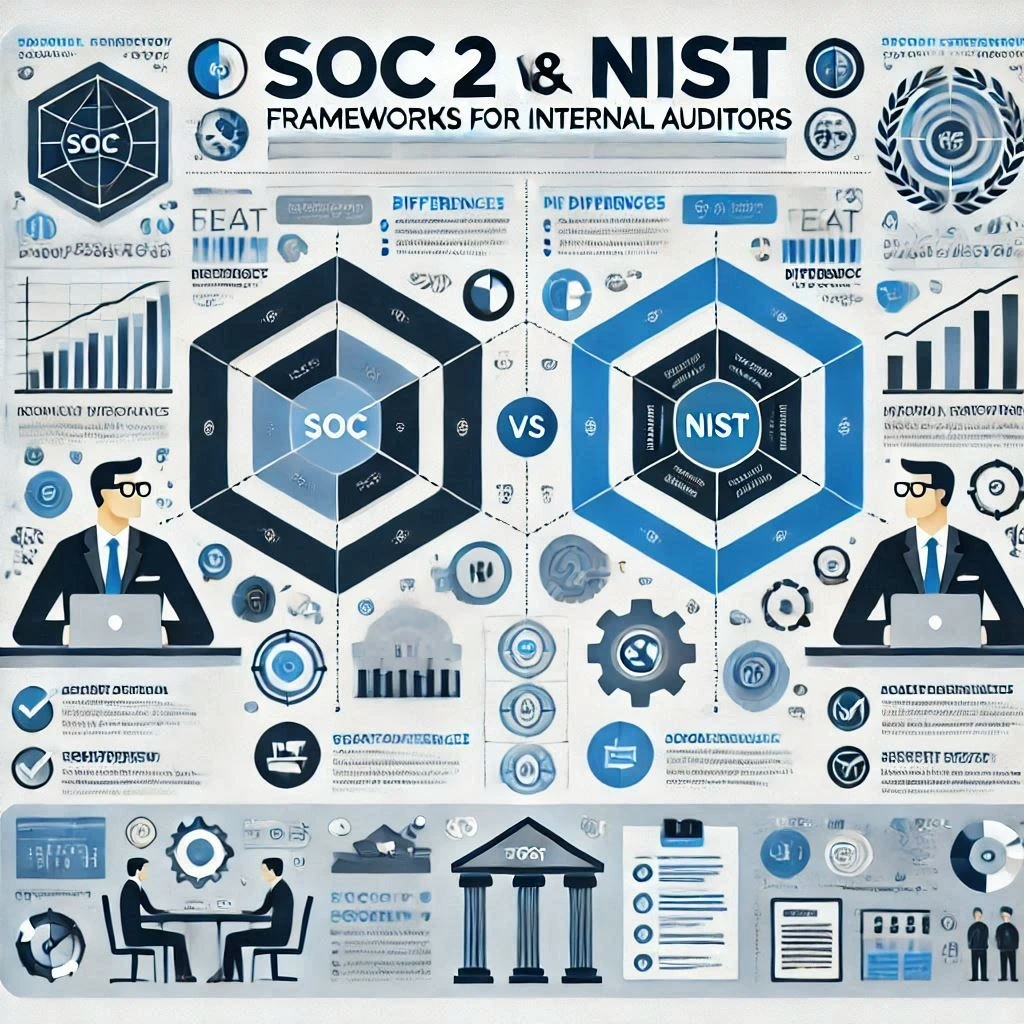Introduction
In the dynamic landscape of finance and accounting, the Certified Public Accountant (CPA) certification stands as a hallmark of professional excellence. For internal auditors, pursuing CPA certification not only enhances their credibility but also broadens their understanding of the accounting profession, ultimately enriching their contributions to their organizations. The CPA credential signifies a deep knowledge of accounting principles, tax regulations, and auditing standards, making it a valuable asset for those in the internal audit field.
Internal auditors possess a unique perspective that can significantly influence their approach to CPA exam preparation. Their experience in evaluating risk management, governance, and compliance equips them with analytical skills that are crucial for tackling the complexities of the CPA exam. This background allows internal auditors to approach the exam with a strategic mindset, leveraging their existing knowledge while filling in the gaps necessary for CPA readiness.
Choosing the right order to take the CPA exam is a critical decision that can impact an internal auditor’s study efficiency and overall success. Each section of the CPA exam covers distinct areas of knowledge, and understanding the interconnections between these topics can help candidates optimize their study plans. In this blog, we will explore the recommended order for taking the CPA exam, considering the unique strengths of internal auditors and how they can best prepare for each section. We will also discuss strategies for effective study habits and time management, ensuring that internal auditors can transition smoothly from their auditing roles to CPA certification.
Understanding the CPA Exam Structure
For internal auditors contemplating the transition to CPA certification, it is crucial to grasp the structure of the CPA exam. The exam comprises four distinct sections: Auditing and Attestation (AUD), Business Environment and Concepts (BEC), Financial Accounting and Reporting (FAR), and Regulation (REG). Each section not only tests specific knowledge areas but also aligns closely with the skills and competencies developed in internal auditing.
Overview of the Four CPA Exam Sections
- Auditing and Attestation (AUD)
- The AUD section focuses on the principles and procedures of auditing, including the standards for conducting audits and the ethical responsibilities of auditors. For internal auditors, this section is particularly relevant as it covers topics such as risk assessment, internal controls, and audit evidence. Understanding these concepts is essential for internal auditors who must evaluate the effectiveness of their organization’s internal controls and compliance with regulations.
- Business Environment and Concepts (BEC)
- BEC encompasses a broad range of topics, including corporate governance, economic concepts, and financial management. This section is vital for internal auditors as it provides insights into the business environment in which they operate. Knowledge of business processes and the economic factors that influence organizational performance can enhance an internal auditor’s ability to assess risks and recommend improvements effectively.
- Financial Accounting and Reporting (FAR)
- The FAR section delves into financial accounting principles, reporting standards, and the preparation of financial statements. For internal auditors, a solid understanding of financial reporting is crucial, as they often review financial statements for accuracy and compliance. This section equips auditors with the knowledge to identify discrepancies and ensure that financial reporting aligns with regulatory requirements.
- Regulation (REG)
- The REG section covers federal taxation, ethics, and business law. Internal auditors must be familiar with regulatory compliance and the legal framework governing their organizations. This section is particularly relevant for auditors involved in compliance audits, as it provides the necessary background to evaluate adherence to laws and regulations effectively.
Relevance to Internal Auditing and Accounting
Each section of the CPA exam is designed to build upon the foundational knowledge that internal auditors already possess. By understanding the content areas and format of each section, internal auditors can strategically prepare for the exam, leveraging their existing skills while addressing any knowledge gaps.
- Integration of Skills: The skills acquired in internal auditing—such as analytical thinking, attention to detail, and a strong ethical foundation—are directly applicable to the CPA exam. This synergy can enhance study efficiency and exam performance.
- Strategic Preparation: Familiarity with the exam structure allows internal auditors to prioritize their study efforts. For instance, those with a strong background in auditing may choose to tackle the AUD section first, while others might prefer to start with BEC to build a broader understanding of the business environment.
Importance of Understanding Content Areas and Format
Understanding the content areas and format of each CPA exam section is essential for effective preparation. Each section has a unique structure, including multiple-choice questions, task-based simulations, and written communication tasks (in BEC). Familiarity with these formats can help internal auditors develop effective study strategies and practice techniques that align with the exam’s requirements.
Assessing Your Internal Audit Skills
Transitioning from internal audit to pursuing CPA certification can be a strategic move for professionals looking to enhance their career prospects. As internal auditors, you already possess a wealth of knowledge and skills that can be advantageous in the CPA exam process. However, understanding how your existing expertise aligns with the CPA exam content is crucial for effective preparation. This section will guide you through assessing your internal audit skills, identifying strengths, recognizing knowledge gaps, and utilizing self-assessment tools to ensure you are CPA-ready.
Identifying Strong Areas from Internal Audit Experience
Internal auditors often engage in various activities that overlap significantly with CPA exam topics. Here are some key areas where your internal audit experience may provide a solid foundation:
- Risk Assessment and Management: Internal auditors are trained to identify and evaluate risks within an organization. This skill is directly applicable to the CPA exam, particularly in the Auditing and Attestation (AUD) section, where understanding risk assessment is critical[1].
- Internal Controls: Your familiarity with internal controls and compliance can be a significant advantage. The CPA exam tests knowledge of internal control systems, making your experience in evaluating and improving these systems highly relevant[2].
- Financial Reporting: Many internal auditors work closely with financial statements and reporting processes. This experience is beneficial for the Financial Accounting and Reporting (FAR) section of the CPA exam, which covers topics such as financial statements, transactions, and accounting principles[3].
- Analytical Skills: The analytical skills developed through internal audit work can aid in problem-solving and decision-making, which are essential for the CPA exam’s case studies and simulations[4].
Discussing Gaps in Knowledge
While your internal audit background provides a strong foundation, there may be specific areas where additional study is necessary. Consider the following potential gaps:
- Taxation Knowledge: If your internal audit experience has not included significant exposure to tax regulations and compliance, you may need to focus on the Regulation (REG) section of the CPA exam, which covers federal taxation and ethics[5].
- Advanced Accounting Topics: Areas such as business combinations, consolidations, and international accounting may not be part of your daily responsibilities. These topics are crucial for the FAR section and may require additional study[6].
- Ethics and Professional Responsibilities: Understanding the ethical standards and professional responsibilities expected of CPAs is vital. If your internal audit role has not emphasized these aspects, consider dedicating time to this area, especially for the AUD and REG sections[7].
Encouraging Self-Assessment Tools and Practice Exams
To effectively gauge your readiness for the CPA exam, utilizing self-assessment tools and practice exams can be invaluable. Here are some strategies to consider:
- Diagnostic Tests: Many CPA review courses offer diagnostic tests that can help identify your strengths and weaknesses across different exam sections. Taking these tests can provide insight into areas that require more focus[8].
- Practice Questions: Engaging with practice questions and simulations can help familiarize you with the exam format and question types. This practice is essential for building confidence and improving your test-taking skills[9].
- Study Groups: Joining a study group with fellow internal auditors or CPA candidates can provide support and motivation. Discussing challenging topics and sharing resources can enhance your understanding and retention of material[10].
- Feedback Mechanisms: Consider seeking feedback from mentors or colleagues who have successfully passed the CPA exam. Their insights can help you refine your study approach and focus on critical areas[11].
Recommended Order for Taking the CPA Exam
Transitioning from an internal audit role to CPA certification can be a strategic move that enhances your professional capabilities and career prospects. For internal auditors, the CPA exam presents a unique opportunity to deepen your understanding of accounting principles while leveraging your existing knowledge in auditing. Here, we propose a recommended order for taking the CPA exam that maximizes efficiency and retention, tailored specifically for internal auditors.
Proposed Order: AUD, FAR, REG, BEC
- AUD (Auditing and Attestation): Starting with the AUD section is a natural choice for internal auditors. This section covers topics that are already familiar, such as audit processes, internal controls, and risk assessment. By beginning with AUD, you can build confidence and reinforce your existing knowledge, making it easier to absorb new information. The familiarity with auditing concepts allows for a smoother transition into the more complex areas of accounting that follow.
- FAR (Financial Accounting and Reporting): After mastering AUD, the next logical step is FAR. This section delves into financial statements, accounting standards, and reporting requirements. For internal auditors, understanding financial reporting is crucial, as it directly impacts audit assessments. The knowledge gained in AUD will aid in comprehending FAR, as you will be able to relate auditing practices to financial reporting standards, enhancing retention and application of the material.
- REG (Regulation): Following FAR, the REG section focuses on business law, ethics, and taxation. While this may seem like a departure from the previous sections, the foundational knowledge from AUD and FAR will support your understanding of regulatory frameworks and compliance issues. Internal auditors often encounter regulatory matters, making this section relevant and beneficial. Additionally, the skills developed in FAR regarding financial reporting will assist in grasping tax implications and legal considerations.
- BEC (Business Environment and Concepts): Finally, the BEC section covers business concepts, economic principles, and strategic management. This section is often viewed as less technical than the others, making it a suitable capstone to your CPA journey. By this point, you will have developed a robust understanding of auditing, financial reporting, and regulatory issues, allowing you to approach BEC with a comprehensive perspective. The knowledge from previous sections will enhance your ability to analyze business environments and apply strategic thinking.
Rationale Behind the Order
The proposed order of AUD, FAR, REG, and BEC is designed to facilitate knowledge transfer and build complexity gradually. Starting with AUD allows internal auditors to leverage their existing expertise, which can significantly boost confidence and motivation. As you progress through the exam, each section builds on the previous one, creating a cohesive learning experience that enhances retention.
- Knowledge Transfer: Each section is interconnected, and the skills acquired in one area can be applied to the next. For instance, understanding internal controls in AUD will help you analyze financial statements in FAR, while knowledge of financial regulations in REG will inform your approach to business concepts in BEC.
- Building Complexity: The order also reflects a natural progression from specific auditing practices to broader business concepts. This structure allows for a gradual increase in complexity, making it easier to digest challenging material without feeling overwhelmed.
Variations Based on Individual Strengths
While the recommended order provides a strategic framework, it is essential to recognize that individual strengths and preferences may influence your approach. Some internal auditors may feel more comfortable with regulatory issues and choose to tackle REG earlier in their study plan. Others might prefer to start with BEC if they have a strong background in business concepts.
Ultimately, the key is to assess your own knowledge base and comfort level with each section. Consider taking practice exams or diagnostic tests to identify areas of strength and weakness. This self-assessment can guide you in customizing your exam order to align with your unique learning style and professional background.
Study Strategies for Each CPA Exam Section
Transitioning from internal auditing to CPA certification can be a significant step in an auditor’s career. As internal auditors seek to enhance their qualifications and broaden their expertise, understanding the best order to take the CPA exam is crucial. This section will focus on effective study strategies tailored for internal auditors preparing for each CPA exam section, ensuring a smooth transition into CPA readiness.
Study Strategies for Each CPA Exam Section
1. Understanding the CPA Exam Structure
The CPA exam consists of four sections: Auditing and Attestation (AUD), Business Environment and Concepts (BEC), Financial Accounting and Reporting (FAR), and Regulation (REG). For internal auditors, the order in which these sections are taken can significantly impact their study experience and overall success. A common recommendation is to start with AUD, as it aligns closely with the internal audit knowledge base.
2. Auditing and Attestation (AUD)
Resources and Study Materials:
– Review Courses: Consider enrolling in a CPA review course specifically designed for the AUD section, such as Becker or Wiley CPAexcel, which offer comprehensive materials tailored to the exam’s content.
– Textbooks and Guides: Utilize resources like the AICPA’s official study materials and the “Auditing and Assurance Services” textbook for in-depth understanding.
Time Management and Study Schedule:
– Study Plan: Allocate 4-6 weeks for AUD preparation, dedicating 15-20 hours per week. Break down the content into manageable sections, focusing on key areas such as audit planning, internal controls, and evidence gathering.
– Practice Exams: Regularly take practice exams to familiarize yourself with the exam format and identify areas needing improvement.
Collaboration and Support:
– Study Groups: Join or form study groups with fellow internal auditors. This collaboration can provide motivation, diverse perspectives, and accountability.
3. Business Environment and Concepts (BEC)
Resources and Study Materials:
– Online Courses: Platforms like Gleim and Roger CPA Review offer targeted courses for BEC, focusing on business concepts and economic principles.
– Supplemental Reading: Books such as “Business Environment and Concepts” by the AICPA can provide additional insights.
Time Management and Study Schedule:
– Study Duration: Plan for 3-4 weeks of study, with 10-15 hours per week. Focus on understanding business structures, economic concepts, and financial management.
– Mock Tests: Incorporate mock tests to gauge your understanding and readiness.
Collaboration and Support:
– Peer Discussions: Engage in discussions with peers about business concepts, which can enhance understanding and retention.
4. Financial Accounting and Reporting (FAR)
Resources and Study Materials:
– Comprehensive Review Courses: Invest in a course like Gleim or Becker that covers FAR extensively, as this section is often considered the most challenging.
– Practice Questions: Utilize question banks to practice various accounting scenarios and financial reporting standards.
Time Management and Study Schedule:
– Extended Study Time: Allocate 6-8 weeks for FAR preparation, dedicating 20-25 hours per week. Focus on key areas such as financial statements, accounting principles, and reporting standards.
– Regular Reviews: Schedule weekly reviews of previously covered material to reinforce learning.
Collaboration and Support:
– Study Partners: Pair up with a study partner to discuss complex topics and quiz each other on key concepts.
5. Regulation (REG)
Resources and Study Materials:
– Focused Review Courses: Use CPA review courses that emphasize tax regulations and business law, such as Roger CPA Review or Surgent CPA Review.
– Tax Guides: Reference IRS publications and tax law textbooks for practical insights.
Time Management and Study Schedule:
– Study Timeline: Plan for 4-6 weeks of study, with 15-20 hours per week. Concentrate on tax regulations, ethics, and business law.
– Practice Scenarios: Work through real-life scenarios to apply tax concepts and regulations effectively.
Collaboration and Support:
– Networking: Connect with other internal auditors who are also preparing for the REG section to share resources and insights.
Overcoming Challenges in CPA Exam Preparation
Transitioning from an internal audit role to CPA certification can be a rewarding yet challenging journey. Internal auditors often face unique obstacles when preparing for the CPA exam, particularly due to the demands of their current positions. This section will explore common challenges faced by internal auditors during CPA exam preparation and offer effective strategies to overcome them.
Balancing Work and Study: Time Constraints
One of the most significant challenges for internal auditors preparing for the CPA exam is managing time effectively. The dual responsibilities of a full-time job and rigorous study schedules can lead to feelings of overwhelm. Here are some strategies to help manage this balance:
- Create a Structured Study Schedule: Develop a detailed study plan that outlines specific topics to cover each week. Allocate time slots for studying that fit around your work commitments, ensuring you dedicate consistent hours each week to your exam preparation. Utilizing tools like calendars or study apps can help keep you organized and accountable[1].
- Prioritize Tasks: Identify the most critical tasks in both your work and study schedules. By prioritizing your responsibilities, you can focus on what needs immediate attention, allowing for more efficient use of your time. Consider using the Eisenhower Matrix to categorize tasks based on urgency and importance[2].
- Utilize Downtime: Take advantage of any downtime during your workday, such as breaks or commutes, to review flashcards or listen to CPA review materials. This approach can help maximize your study time without overwhelming your schedule[3].
Maintaining Motivation and Managing Stress
The journey to CPA certification can be long and arduous, often leading to burnout or loss of motivation. Here are some tips to maintain your drive and manage stress effectively:
- Set Realistic Goals: Break down your study plan into smaller, achievable goals. Celebrate each milestone, whether it’s completing a chapter or passing a practice exam. This can help maintain motivation and provide a sense of accomplishment throughout your preparation[4].
- Incorporate Self-Care: Regularly engage in activities that promote relaxation and well-being, such as exercise, meditation, or hobbies. Taking time for self-care can help reduce stress levels and improve focus during study sessions[5].
- Join a Study Group: Connecting with peers who are also preparing for the CPA exam can provide support and motivation. Study groups can facilitate knowledge sharing, accountability, and encouragement, making the preparation process more enjoyable and less isolating[6].
Handling Test Anxiety and Building Confidence
Test anxiety is a common issue among CPA candidates, particularly for those transitioning from internal audit roles. Here are strategies to help manage anxiety and build confidence:
- Practice with Mock Exams: Familiarize yourself with the exam format and types of questions by taking practice exams. This not only helps you gauge your knowledge but also reduces anxiety by making you more comfortable with the testing environment[7].
- Develop a Pre-Test Routine: Establish a calming pre-test routine that includes relaxation techniques, such as deep breathing or visualization exercises. This can help center your thoughts and reduce anxiety on exam day[8].
- Focus on Your Strengths: Reflect on your experience as an internal auditor and how it has equipped you with valuable skills relevant to the CPA exam. Recognizing your strengths can boost your confidence and help you approach the exam with a positive mindset[9].
Conclusion
The journey to CPA certification is a significant milestone for internal auditors, enhancing their professional credibility and expanding their career opportunities. As we conclude our exploration of the best order to take the CPA exam, it’s essential to reflect on the key points discussed and the strategic planning necessary for success.
Significance of CPA Certification for Internal Auditors
For internal auditors, obtaining a CPA certification is not just a badge of honor; it represents a commitment to excellence in the field of accounting and auditing. The CPA designation is widely recognized and respected, providing auditors with a deeper understanding of financial regulations, compliance, and risk management. This knowledge is invaluable as it equips internal auditors to better assess organizational risks and contribute to effective governance practices. Moreover, the CPA credential can open doors to advanced career opportunities, including leadership roles within organizations or specialized consulting positions.
Recommended Order and Study Strategies
Throughout our discussion, we highlighted the recommended order for taking the CPA exam, which typically suggests starting with the Auditing and Attestation (AUD) section. This approach allows internal auditors to leverage their existing knowledge and experience in auditing practices. Following AUD, candidates can proceed to the Financial Accounting and Reporting (FAR) section, which builds on foundational accounting principles. Next, the Regulation (REG) section can be tackled, focusing on tax regulations and business law, before concluding with the Business Environment and Concepts (BEC) section, which encompasses broader business concepts.
In addition to the order of sections, effective study strategies are crucial for success. Internal auditors should consider creating a structured study schedule, utilizing CPA review courses, and engaging in peer study groups. Practice exams and simulations can also provide valuable insights into the exam format and help identify areas needing further review.
Find out more about Shaun Stoltz https://www.shaunstoltz.com/about/
This post was written by an AI and reviewed/edited by a human.



